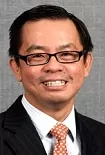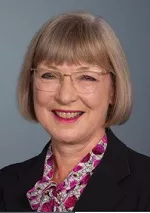Qantas and Sydney City Council's Central Park are already benefitting from well-established cogeneration and trigeneration technologies that have the potential to make urban precincts much more energy efficient.
Cogeneration combines heat and power to generate electricity and heating (thermal energy) through a single power source. When the source also generates cooling, the process is called trigeneration.
Both forms are powered by gas, renewable gas or biomass, which have much lower carbon footprints than coal.
Waste energy is captured and used to cool and heat spaces. Further efficiencies come from systems that are embedded locally so electricity only has to travel short distances – a form of decentralisation that is helping cities move away from fossil fuel reliance.
KEY DEVELOPMENTS GLOBALLY
Around the world, co- and trigeneration systems are being used to heat and cool whole districts, water and building spaces.
The processes account for 11 percent of the European Union's electricity and 60 percent of Denmark's space and water heating. This figure rises to 98% in Copenhagen.
Copenhagen uses a decentralised cogeneration energy network to recover, and then use, surplus heat to warm building spaces, districts and domestic hot water. One third of Copenhagen's energy currently comes from renewable sources and it aims to replace coal with wood chips and straw in order to become carbon neutral by 2025.
Paris is already fuelled by 36 geothermal district heating networks while Munich, which has a district heating network approximately 800 kilometres long, is planning to be the first large German city heated solely by renewable sources.
For its part, the City of Sydney Council, as part of its Sustainable Sydney 2030 initiative to reduce greenhouse gas emissions, has prepared a Decentralised Energy – Trigeneration Master Plan calling for the deployment of trigeneration in accordance with a coordinated strategy.1 For smaller-scale cogeneration and trigeneration servicing individual dwellings, apartment buildings or a local group of residences, the City of Sydney is proposing that building owners with such a precinct system be allowed to export energy into energy providers' grids.
Sustainable Sydney 2030 aims to develop Sydney's capacity to meet all electricity demand through local electricity generation, with 70 percent trigeneration and 30 percent renewable energy by 2030.
In total, Australia now has approximately 3305MW of cogeneration installed with another 18MW of trigeneration.2
CHALLENGES TO PRECINCT ENERGY NETWORKS IN AUSTRALIAN CITIES
Australian governments, independent regulators, property owners and developers and energy suppliers must cooperate closely if co- and trigeneration are to succeed.
Financially viable precinct energy generation must also be able to supplement natural gas with other forms of renewable energy.
Building versus precinct generation
The significant capital investment in trigeneration systems could be offset by leasing or selling installed systems to energy providers.
However, issues include:
- Property ownership rights – creating easements and leasing areas to locate trigeneration facilities and supporting infrastructure.
- Operation and maintenance issues – including generation facility reliability and integrity.
Current regulatory hurdles
Electricity cannot be sold to end users without a licence or an exemption, yet those exemptions could be expanded to allow local generators to export, sell and distribute electricity to local customers.
Expanded exemptions would also benefit other decentralised renewable energy providers who could export electricity without retail authorisations or the need to register with the Australian Energy Market Operator to buy wholesale electricity.
Currently, building owners may only sell electricity to their local energy retailer. New selling arrangements could create opportunities for buildings to capture solar energy or use large, unshaded, industry area roofs for solar PV.
Building requirements
The Australian Building Code has building fabric and domestic services requirements for energy efficiency, specified in Performance Requirement P2.6.2.
The Building Energy Efficiency Disclosure Act 2010 (Cth) should recognise the electricity and thermal energy outputs of precinct systems and the NSW Energy Savings Scheme's cogeneration and trigeneration.
The current NABERS Ruling should also include centralised master-planned community co- and trigeneration to allow, for example, the export of precinct-generated thermal energy and electricity to be proportionally excluded from a building's NABERS Energy Base Building Rating.
All additional energy required to reticulate, boost and supply the electrical and thermal energy to a third-party end user would be allocated a proportional generation emissions value and excluded from the NABERS Rating.
NSW Strata regulatory schemes
The present Strata Schemes Management Act 1996 (NSW) excludes the supply of thermal energy as part of sustainable new development under section 113.
Planning
Precinct trigeneration should be elevated to State Significant Development status, under the NSW State and Regional Development (SEPP) Act 2011, because of its potential size, economic value and impact. Application of SEPP should also be streamlined to precinct trigeneration.
Environmental Upgrade Agreement (EUAs)[3]
The NSW EUA legislation has successfully motivated environmental improvement building works but the Local Government (Environmental Upgrade Agreement) Act 2010 still only applies to existing developments. New developments should also be given access to EUA low-cost finance.
Reliable gas supplies
Existing arrangements for gas distributor access charges on trigeneration projects need to be clarified and the apparent structural, discriminatory pricing of domestic water heating addressed.
The National Gas Law legislative framework should be updated so that renewable gas supplied into the gas grid is treated like renewable electricity purchased by renewable power purchase agreements.
What are the implications for property owners and developers and energy suppliers?
Australian owners, developers and energy suppliers contemplating co- and trigeneration systems should carefully consider the challenges outlined above and regulatory changes should ensure that owners can make the most of these systems.
Footnotes
1 Kinesis, Decentralised Energy - Trigeneration Master Plan
2 Clean Energy Australia 2013 report.
3 An EUA is a voluntary agreement between a building owner, a finance provider and a local council, made possible by changes to the Local Government Act in 2011 to encourage building upgrades. Under these agreements, the financier provides the building owner funds for the upgrade and is repaid by a charge on the land called an Environmental Upgrade Charge (EUC).
The content of this article is intended to provide a general guide to the subject matter. Specialist advice should be sought about your specific circumstances.
 |
|
| Most awarded firm and Australian deal of
the year Australasian Legal Business Awards |
Employer of Choice for
Women Equal Opportunity for Women in the Workplace (EOWA) |


